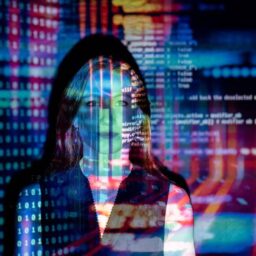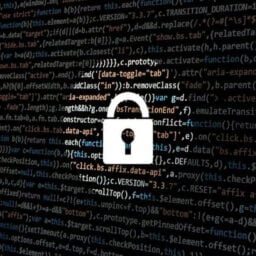
Numerous innovations (mobile Internet, artificial intelligence, smart home, and so on) have dramatically advanced in recent years – almost since the year 2000 – and have enabled the transition from expert application to people’s daily lives. Technology is an integral part of digitalization. Based on emerging digital technology, digital developments are created: innovative use cases led by existing companies on the one hand, and start-ups and venture capital on the other.
WHAT KIND OF POTENTIAL EFFECT WILL DIGITALIZATION HAVE
Digital transformation is a significant shift in the economy and culture that has lasted nearly 50 years. The spread of the Internet and the advent of services like AOL and Compuserve set off the movement in the early 1990s.
By fostering digital infrastructure accessibility as a service to every citizen and ushering in an age of e-Governance at strategic levels, the Modi government hopes to turn India into a digitally empowered society and information economy.
“I dream of a Digital India where access to information knows no barrier” – Narendra Modi.
Digital India is essentially a collaborative initiative of the Indian government to link rural areas to the internet and provide them with access to basic online services. This program aims to turn India into a digitally strong society and informed nation by influencing IT as a modern India’s growth engine. India currently has 697 million internet users approx., and by the end of 2025, mobile internet users are predicted to reach 975 million. The number is huge, and people will have greater access to government information and e-government services as part of Digital India. The country’s digital space is vulnerable to a variety of intrusions, including cyber warfare, the theft of computerized data of commercial or national significance, electronic fraud through hacking, attacks on open networks (disrupting services temporarily), large-scale digital invasion, and so on.
As India becomes more digitally linked, cybersecurity threats are becoming more dangerous. Cybersecurity is the practice of defending against automated attacks on devices, networks, and services. These cyberattacks are usually aimed at gaining access to, altering, or damaging confidential data, extorting money from users, or disrupting normal business processes. Also, as India makes tremendous progress toward a cashless economy and more data is generated and processed on company networks, the possibility of data breaches grows.
THE EFFECT OF COVID-19 ON CYBERSECURITY
Covid-19 has stimulated a breakthrough moment. It has advocated for the growth, refinement, standardization, and common use of technical elements such as Work from Home and digital marketing. Furthermore, these developments will take hold and persist well after the pandemic is over. Consequently, it is fair to assume that we are in the middle of a new and rapid digital transition.
In contrast, the pandemic, according to the majority of survey respondents (85%), has necessitated a move to remote work, which has increased the organizations’ exposure to possible cyber-attacks. Cyber-attacks during the Covid-19 pandemic increased by nearly 300 percent in the country, reaching 1,158,208 compared to 394,499 in 2019.
STEPS TAKEN BY GOVERNMENT FOR CYBERSECURITY
- In light of this, the Insurance Regulatory and Development Authority of India (IRDAI) Working Committee has drafted comprehensive regulations to resolve cyber risks. The committee also proposed that a Cyber Liability Strategy be enforced to protect policyholders from cybercrime.
- The establishment of the National Critical Information Infrastructure Protection Centre (NCIIPC) under [1]Sec70A of the Information Technology Act, 2000(amended 2008), for the protection of the country’s critical information infrastructure has been done.
- All companies that provide digital services are required to report cybersecurity incidents to CERT-In as soon as possible.
- Cyber Swachhta Kendra (Botnet Cleaning and Malware Analysis Centre)[2] has been set in motion to provide identification of malicious programs as well as free tools to uninstall such programs.
- Development of a Crisis Management Plan to combat cyber threats and cyber terrorism will also take place.
- The Information Security Education and Awareness Project (ISEA) was developed by the Government of India to raise awareness and to provide research, education, and training in the field of information security.
- Ravi Shankar Prasad, Minister of Electronics and Information Technology, introduced the Personal Data Protection Bill, 2019[3], in Lok Sabha on December 11, 2019. The Bill aims to secure individuals’ personal data and creates a Data Protection Authority to that end. The Bill regulates the processing of personal data by the following entities: (i) the government, (ii) companies incorporated in India, and (iii) international companies dealing with the personal data of Indian citizens. Personal data is information about an individual’s features, traits, or attributes that can be used to classify them. Certain personal details are classified as confidential personal data under the Bill.
RESPONSIBILITY OF NETIZENS
While we become a more linked society reliant on instant access, our adversaries’ abilities, and methods of attack, including cybercriminals, continue to develop. As a result, it is important that all Internet users understand the existence of these cyber threats and the significance of engaging in secure online activity.
Some simple measures you should take to safeguard your cybersecurity.
- Set powerful passwords, update them regularly, and never share them with anyone.
- Installing updates on your device, tablet, and the smartphone will keep your operating system, browser, and other essential applications optimized
- Maintain an open dialogue about online safety and security with your peers, relatives, and coworkers.
- Make use of privacy settings and keep the number of personal details you share online to a minimum.
- Recognize that what we say and do online cannot be undone.
- Also, netizens’ need to learn ‘netiquettes.
CONCLUSION
The internet is not a dangerous place, but it is abused. Of course, recognizing that cyber thieves are most likely one step ahead of us and thus making netizens specifically aware of risks is the first step. However, shielding computer networks from unauthorized access to confidential information on the internet necessitates a high level of expertise.
India would need a growing number of security professionals who are capable of configuring and using threat identification software, conducting data analysis, and analyzing the findings to recognize bugs, hazards, and risks to an enterprise with the end goal of preserving and defending apps and systems. Authorities, businesses, people, and other stakeholders would be doing even more to improve India’s cybersecurity to meet global standards.
Author(s) Name: Samiksha Gawali (Amity Law School, Chhattisgarh)
Image
[1] SUBHASH C. JAIN, The Information Technology Act, 2000, The Gazette of India (June 9, 2000) https://web.archive.org/web/20170119125539/http://meity.gov.in/sites/upload_files/dit/files/downloads/itact2000/itbill2000.pdf#
[2] Admin, Cyber Swachhata Kendra, 2019 (April 28, 2019) https://www.cyberswachhtakendra.gov.in/
[3] Anurag Vaishnav, Bill Summary of The Personal Data Protection Bill, 2019, PRS Legislative Research (Dec. 11, 2019), https://prsindia.org/billtrack/prs-products/prs-bill-summary-3400









